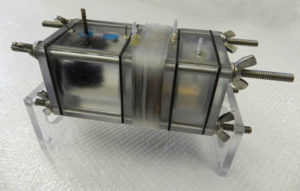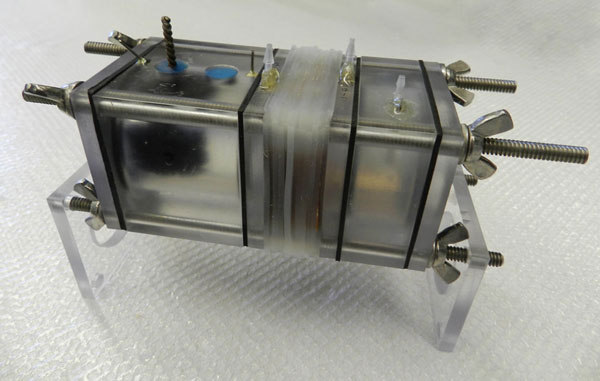According to recent report by the Science Journal,a research team at the Pennsylvania State University developed a technology that would simultaneously treat the water and produce power. They think the process could be used to provide clean water and power for homes in the developing countries. The idea of electric power from waste water can be real boon to all developing countries.
 Engineers at Pennsylvania State University have combined two cutting-edge energy-generation technologies—microbial fuel cells and reverse electrodialysis (RED)—to make a hybrid device that could generate enough energy from waste water to power its treatment and even feed some extra electricity into the grid.
Engineers at Pennsylvania State University have combined two cutting-edge energy-generation technologies—microbial fuel cells and reverse electrodialysis (RED)—to make a hybrid device that could generate enough energy from waste water to power its treatment and even feed some extra electricity into the grid.
A microbial fuel cell (MFC) or biological fuel cell is a bio-electrochemical system that drives a current by mimicking bacterial interactions found in nature.
In Reverse electrodialysis (RED), fresh water and seawater are placed in intermittent chambers separated by membranes, and an electrochemical charge is created. This technology has been researched by Scientists in the Netherlands for some years to generate renewable power along the country’s coastline, where fresh water from rivers meets the salt water of the sea.
The Penn State team says RED technology is problematic because of the large number of membranes required, and because power plants have to be located by the sea. They claim the number of membranes can be reduced and the power output boosted by combining the technology with microbial fuel cells (MFCs).
Both schemes have been under intense study, but each has a big drawback. Microbial fuel cells produce little power, and RED cells must be stacked up in a series of at least 20 pairs of membranes, which don’t come cheap. Combining the two technologies overcame both weaknesses, says Logan: “It’s like a turbocharger.” The combination lowered the number of stacks required for RED to 5 instead of 20 and raised, by more than seven times, the amount of power the fuel cell generated when fed a diet of domestic wastewater.
Finding an opportunity to prove the scaled up technology in a real-world installation is a recurring problem in the water industry, as municipalities are famously conservative about trying new technologies that haven’t succeeded elsewhere.
But Since as the population increases the amount of waste water is going to rise and so the countries like India will need to try these technologies soon.
